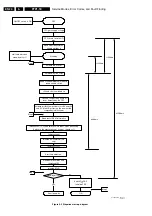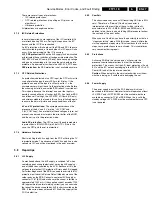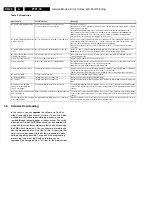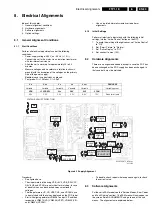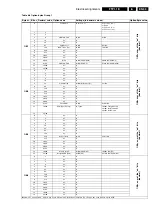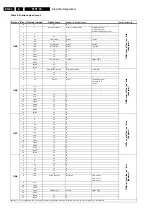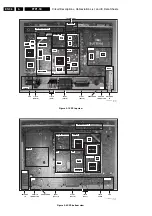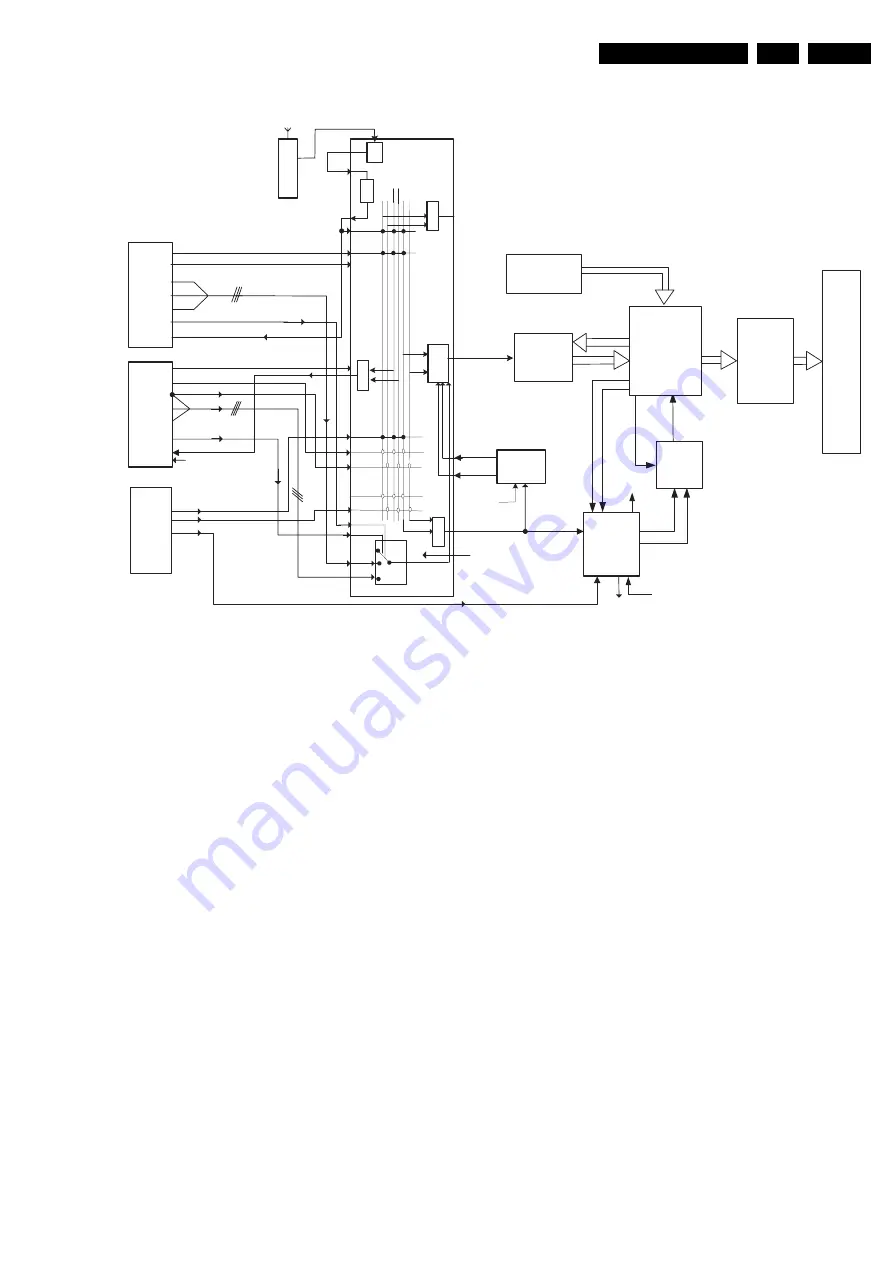
Circuit Descriptions, Abbreviation List, and IC Data Sheets
9.
9.2
Block Diagram
Figure 9-3 Block diagram FTP11
The main tuner is a PLL tuner and delivers the IF-signal, via
audio and video SAW-filters, to the main HIP (High-end Input
Processor). This HIP has the following functions:
•
IF modulation.
•
Video source select and record select (for 1fH inputs).
•
Colour decoder.
•
Synchronisation.
The following video input/output connections (with audio
connections) are available for Europe:
•
Side: interfaces CVBS and Y/C.
•
EXT1: interfaces CVBS, RGB-, and YUV-input (1fH)
•
EXT2: interfaces CVBS and Y/C (meant for VCR or DVDR
connection).
•
EXT3: interfaces CVBS.
•
AV5: interfaces YPbPr (2fH/3fH).
•
AV6: interfaces VGA (2fH/3fH).
The HIP delivers YUV and H/V-sync signals to the PICNIC (in
the Feature Box). This IC takes care of:
•
Analogue to Digital conversion and vice versa.
•
100 Hz processing
•
Interlaced to progressive scan conversion.
•
Panorama mode.
•
Noise reduction.
•
Dynamic contrast.
After the PICNIC, the YUV-signals are fed to the FALCONIC for
"Natural Motion", followed by the Eagle for picture
enhancement. The processed YUV signals (from Eagle or
PICNIC) are, together with the sync-signals from the PICNIC,
then fed to the EBILD (Eagle Based Intelligent LCD Driver).
This programmed IC handles the video control. The RGB-
signals for TXT/CC/OSD (from the uP) are also inserted via this
IC. The video part delivers the RGB signals to the PDP-panel.
The sound part is built around an MSP (Multi-channel Sound
Processor) for IF sound detection, sound control and source
selection. Amplification is done via a "class D" integrated power
amplifier IC, the TDA7490.
The microprocessor, called OTC (OSD, TXT/CC and Control)
takes care of the analogue TXT input processing and output
processing. The OTC, ROM, and RAM are supplied with 3.3 V.
The NVM (Non Volatile Memory) is used to store the settings;
the Flash-RAM contains the set software.
9.3
Power Supply
For Service this supply-panel is a black box.
When defect (this can be traced via error-codes in the error
buffer, or by strange phenomena), a new panel must be
ordered, and after receipt, the defective panel must be send for
repair.
In that case before sending it, check if the supply-output lines
match with the values on the PDP-sticker.
+
+
PR
OC
IF
G
D
+
CVBS txt out main
Y
cvbs
ter
cvbs int
Y
Y
Y
C
C
C
CVBS pip
out
HIP
MAIN
y-cvbs 3
c3
y-cvbs 4
c4
FBL 1 in
FBL 2 in
rgb1
rgb2
set_rgb_main
VIF OUT
PIP
OUT
SCART2
OUT
MAIN
OUT
CVBS 3
STATUS 3
EX
T 3
cvbs 1
cvbs 2
EXT
1
EX
T
2
STATUS 2
Y/CVBS2
R2 C IN
G2
B2 C OUT
FBL 2
Y/CVBS 2 OUT
P50
rgb ext 1
fbl ext 1
read_status 1
CVBS 1
STATUS
R1
G1
B1
FBL 1
TUN_CVBS
OUT
cv
CIN
bs ext 3
P50
to scart 2
COMB
yuv 1fh
Comb control
Keyboard input
I2C
OTC
blanking
RGB
OTC
C
TUN_CVBS OUT
YUV1fH
read_status2
Y/CVBSrecordOut
From OTC
CVBS PIP
OUTmain
CVBS TXT
M
a
in
Tuner
YUV MAIN
Y/Cvbs ext 1/4 main
PDP
A/D
VD
HD3
EBILD
2FH/3FH
INPUTS
FBX
LVDS
transmitter
OTC
S
tat
us
3
S
tat
us
4
CL 36532075_046.eps
201103


